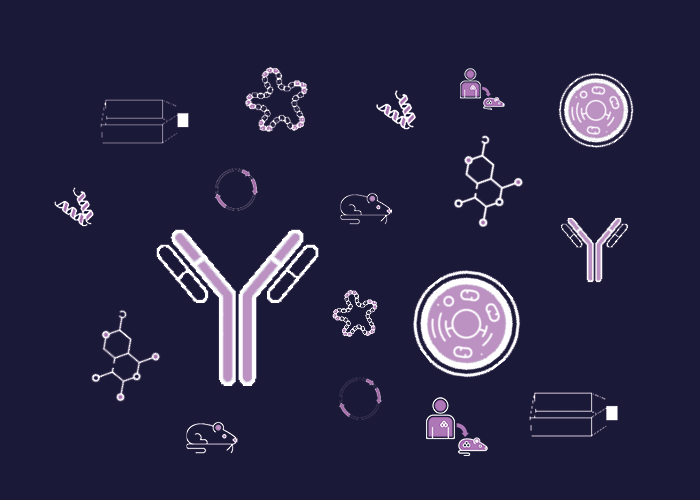
Cat. #151077
Anti-Keratin19 [BA17]
Cat. #: 151077
Sub-type: Primary antibody
Unit size: 100 ug
Availability: 10-12 weeks
Target: Keratin 19
Class: Monoclonal
Application: FACS ; IHC ; IP ; WB
Reactivity: Human
Host: Mouse
£300.00
This fee is applicable only for non-profit organisations. If you are a for-profit organisation or a researcher working on commercially-sponsored academic research, you will need to contact our licensing team for a commercial use license.
Contributor
Inventor: Joyce Taylor-Papadimitriou
Institute: Cancer Research UK, London Research Institute: Lincoln's Inn Fields
Tool Details
*FOR RESEARCH USE ONLY (for other uses, please contact the licensing team)
- Name: Anti-Keratin19 [BA17]
- Research fields: Cell signaling and signal transduction
- Clone: BA17
- Tool sub type: Primary antibody
- Class: Monoclonal
- Conjugation: Unconjugated
- Molecular weight: 40 kDa
- Strain: Balb/c
- Reactivity: Human
- Host: Mouse
- Application: FACS ; IHC ; IP ; WB
- Description: Keratins are a family of intermediate filament proteins that assemble into filaments through forming heterodimers of one type I keratin (keratins 9 to 23) and one type II keratin (keratins 1 to 8). Keratins demonstrate tissue and differentiation specific expression profiles. Keratin 19 (a cytokeratin) is the smallest human keratin and is found in many simple and some non-keratinising stratified squamous epithelia. The degree of keratin 19 positivity in breast cancer distinguishes malignant from benign tumours. Keratin 19 is often co-expressed with keratin 7.
- Immunogen: Detergent-insoluble extract of human mammary epithelial organoids.
- Isotype: IgG1
- Myeloma used: P3X63Ag8.653
Target Details
- Target: Keratin 19
- Molecular weight: 40 kDa
- Target background: Keratins are a family of intermediate filament proteins that assemble into filaments through forming heterodimers of one type I keratin (keratins 9 to 23) and one type II keratin (keratins 1 to 8). Keratins demonstrate tissue and differentiation specific expression profiles. Keratin 19 (a cytokeratin) is the smallest human keratin and is found in many simple and some non-keratinising stratified squamous epithelia. The degree of keratin 19 positivity in breast cancer distinguishes malignant from benign tumours. Keratin 19 is often co-expressed with keratin 7.
Applications
- Application: FACS ; IHC ; IP ; WB
Handling
- Format: Liquid
- Concentration: 0.9-1.1 mg/ml
- Unit size: 100 ug
- Storage buffer: PBS with 0.02% azide
- Storage conditions: -15° C to -25° C
- Shipping conditions: Dry ice
References
- Morton et al. 2008. Am J Pathol. 172(4):1081-7. PMID: 18310506.
- Trp53 deletion stimulates the formation of metastatic pancreatic tumors.
- Aleksic et al. 2007. Gut. 56(2):227-36. PMID: 16870717.
- Cellular immune reaction in the pancreas is induced by constitutively active IkappaB kinase-2.
- Nightingale et al. 2004. J Am Soc Nephrol. 15(1):21-32. PMID: 14694154.
- Oncostatin M, a cytokine released by activated mononuclear cells, induces epithelial cell-myofibroblast transdifferentiation via Jak/Stat pathway activation.
- Brtek et al. 1986. Eur J Cancer Clin Oncol. 22(12):1441-52. PMID: 2439341.
- Expression of monoclonal antibody-defined epitopes of keratin 19 in human tumours and cultured cells.
- Bartek et al. 1985. Int J Cancer. 36(3):299-306. PMID: 2411673.
- Patterns of expression of keratin 19 as detected with monoclonal antibodies in human breast tissues and tumours.
- Bartek et al. 1985. J Cell Sci. 75:17-33. PMID: 2413060.
- A subclass of luminal epithelial cells in the human mammary gland, defined by antibodies to cytokeratins.



